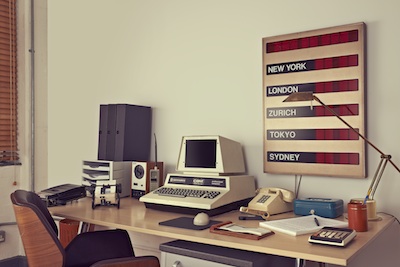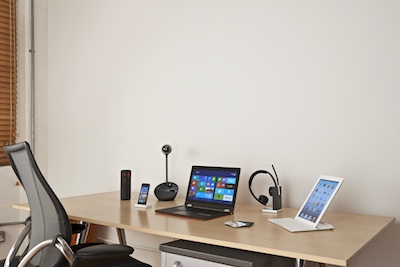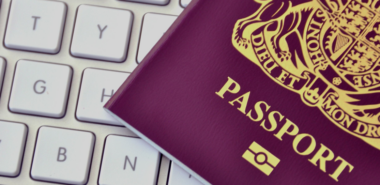The future is smart, and smarter often means smaller (although this might not be the case with smart phones at the moment). And, as you will undoubtedly see from the sliding image of the office past and present, the components of the office of the future take up considerably less space than that of the past, and embody convenience through portability.
Another major difference between the desks of the 70s and 80s and today is that they all look surprisingly similar to one another. The majority of office workers in the not too distant past used the same chunky typewriter or word processor (have a good look at the Commodore 2001 series in the sliding image if you need a reminder), a wired and bulky telephone, the seemingly essential Filofax, in and out trays, and streams of paper everywhere.
Fortunately for those of us in the future, or at least those of us with the desk of now, modern technology enables our offices to be more minimalistic and personalized; in particular personalization is crucial for office satisfaction, as well as consumer satisfaction and loyalty. With this modern and compact technology, featured in our sliding image of the future, there is less need for ‘stuff’, particularly paper waste. Our newer devices can store ridiculously large quantities of information digitally, more than we ever could have stored in paper-based files in our desk trays, filing cabinets or even in the entire office. Furthermore, these new sleek devices are not only visually appealing but could equate to more than an entire filing cabinet’s worth of information in your hand.
This digitization of our information is partially down due to the rapid advances in microchip technology, but also the cloud, its impressive storage capability (which can be used for secure backup), and the computing power it offers. However, we should also bear in mind this digitization leads to greater vulnerability to viruses and cyber-attacks; properly secured cloud computing should consequently be prioritized, and has been key to the advances we benefit from today. Cloud computing is in many ways excellent for convenience and data sharing, I’d just recommend making sure you control who has access to your cloud.
Continuing on this theme of security in the modern workplace, it’s important we recognize the new challenges that face us; challenges that didn’t trouble us in the 70s and 80s. With our modern technology, come modern threats. Being tech savvy with your desk is not just about having the latest gear; instead, securing your software, your desk and ultimately your business is now the crucial factor. And as I mentioned earlier, now personalization is also part of this modern workplace we have another angle to consider. Somewhat unfortunately, the rise of personalized equipment, or BYOD (bring your own device) is now increasing the factors of risk for many businesses. While BYOD is a convenient and popular idea among today’s employees, system security has to come first… That is if you value your data and money of course.
Though it is something that plagues the minds of CIOs, the rise of BYOD is only one of the many consequences of our modern technology. There are other trends that should be considered further. And BYOD doesn’t necessarily have to be a concern; in the same way that you should ensure a proper cloud authentication system is in place, you should also make every effort to secure BYODs when incorporating them into your system. If you can, you’ll enable your office and desk to step whole heartedly into the future.
So, does modern technology make your life easier, or more complicated? Let us know on Twitter using the hashtag #MyDeskNow and share a picture of your desk for the chance to win a prize.


The desktop of the past and near future, imagined by Gemalto in 2013.


